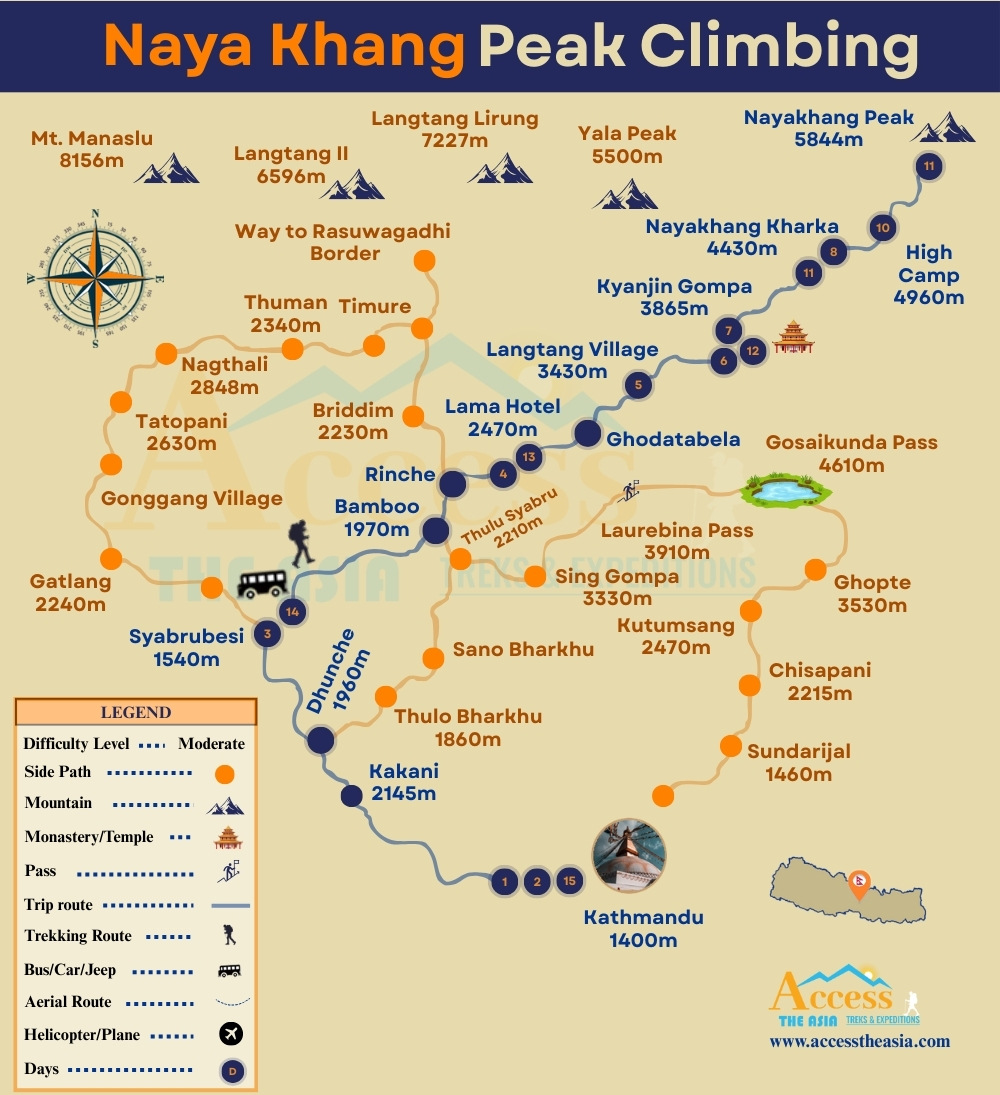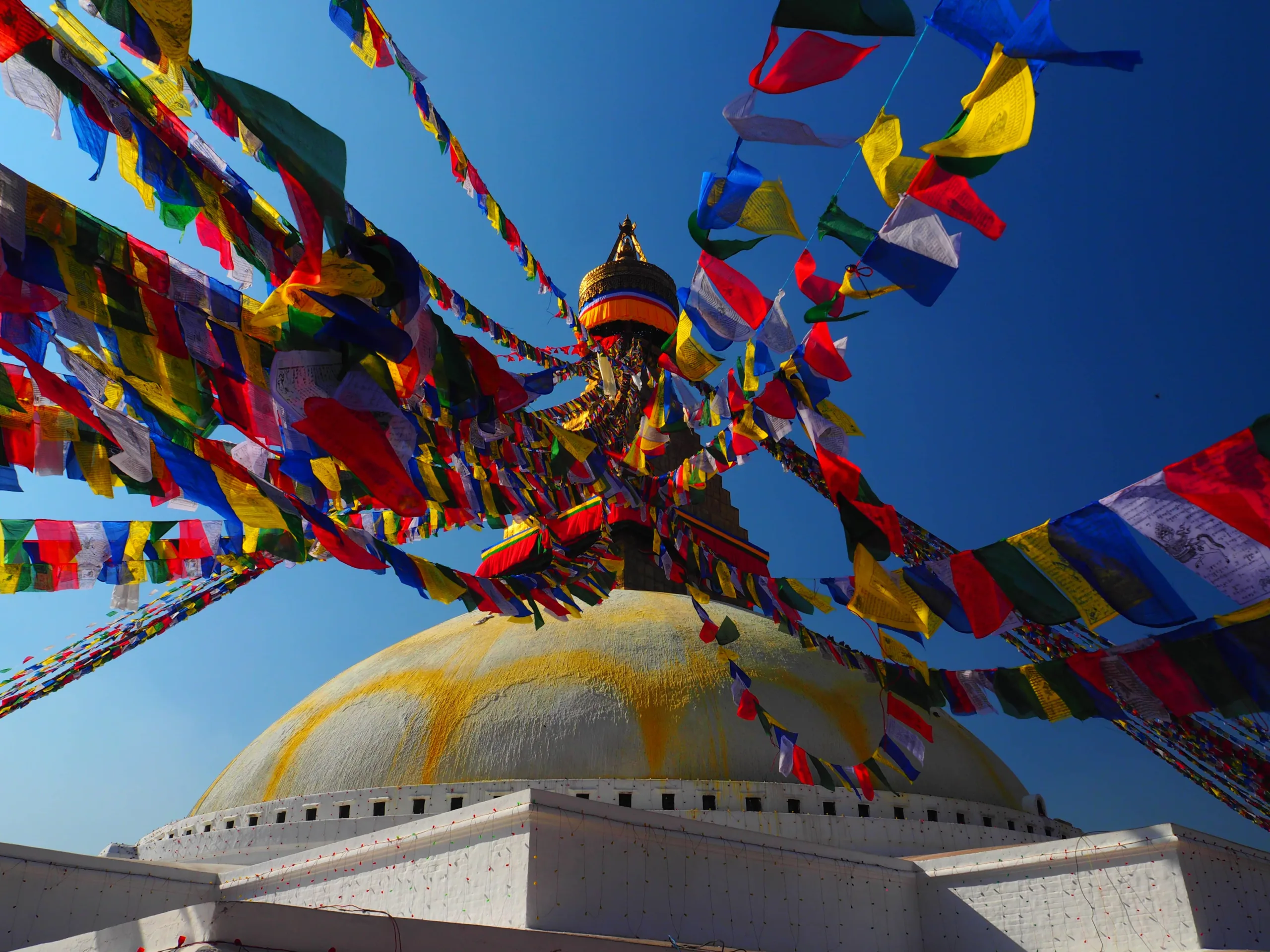One of the explorative days begins with your breakfast and the wonderful morning vibes of the center of Kathmandu. Commence on an enriching cultural journey with Access the Asia Treks, exploring the timeless wonders of Kathmandu Valley with deeply rooted spirituality and stunning architecture. Our city sightseeing tour is designed to immerse you in the cultural and historical richness of Nepal. Highlighting Swayambhunath, Pashupatinath, and Boudhanath as the main attractions, with optional visits to Kathmandu Durbar Square (Kumari Ghar), Bhaktapur Durbar Square, and Patan Durbar Square, this tour promises unforgettable moments.
Swayambhunath (Monkey Temple)
Start your exploration at the iconic Swayambhunath Stupa, perched on a hill offering breathtaking views of Kathmandu Valley. Known as the Monkey Temple due to its lively monkey inhabitants, this UNESCO World Heritage Site is a revered Buddhist sanctuary. The stupa’s white dome, golden spire, and the watchful eyes of the Buddha symbolize spiritual awakening. The surrounding shrines, prayer wheels, and fluttering prayer flags create a tranquil ambiance, perfect for reflection and cultural immersion.
Pashupatinath Temple
A sacred pilgrimage destination for Hindus, Pashupatinath Temple is dedicated to Lord Shiva. Located along the banks of the holy Bagmati River, this UNESCO World Heritage Site is an architectural marvel and spiritual hub. The temple’s golden pagoda roof and intricate woodwork captivate visitors, while the nearby cremation ghats provide a glimpse into Nepalese traditions and rituals. Though non-Hindus cannot enter the main temple, they can experience its vibrant energy from across the river, soaking in the sacred atmosphere.
Boudhanath Stupa
The grand Boudhanath Stupa, one of the largest in the world, stands as a beacon of peace and spirituality. Surrounded by a lively marketplace, this UNESCO World Heritage Site is a haven for Buddhist pilgrims and enthusiasts. The massive white dome and gilded spire, adorned with the all-seeing eyes of the Buddha, create a majestic presence. Visitors can join the circumambulating devotees, spin prayer wheels, or simply admire the serene beauty as the stupa glows softly under evening lights.
Optional Destinations
Kathmandu Durbar Square (Kumari Ghar)
Step into the medieval past at Kathmandu Durbar Square, a historic complex of palaces, temples, and courtyards. The highlight is the Kumari Ghar, where the Living Goddess resides, offering a unique glimpse into Nepal’s living traditions. The square’s intricate woodcarvings, bustling atmosphere, and majestic Taleju Temple make it a captivating experience for history and culture lovers.
Bhaktapur Durbar Square
Renowned for its ancient charm, Bhaktapur Durbar Square is a masterpiece of Newari architecture and culture. Explore the towering Nyatapola Temple, the intricately designed Palace of Fifty-Five Windows, and the vibrant Pottery Square. Walking through the narrow lanes, you’ll discover artisans at work, traditional crafts, and local delicacies that capture the essence of Bhaktapur’s heritage.
Patan Durbar Square
Immerse yourself in the artistic legacy of Nepal at Patan Durbar Square. Famous for its stunning temples and courtyards, including the Krishna Mandir and Mul Chowk, this UNESCO World Heritage Site is a treasure trove of craftsmanship. The Patan Museum, housed within the palace complex, offers fascinating insights into Hindu-Buddhist art and history, making this destination a must-visit for art enthusiasts.
With Access the Asia Treks, discover the timeless beauty of Kathmandu Valley, where every landmark tells a story of spirituality, artistry, and tradition. Let us guide you on a memorable journey through Nepal’s cultural heart.
City Tour: Entire day
Accommodation: Luxurious hotel in Kathmandu


















